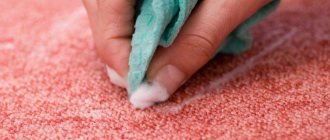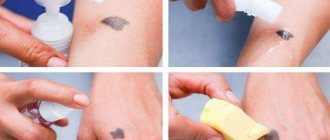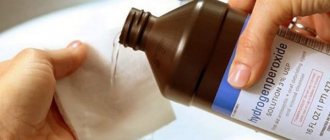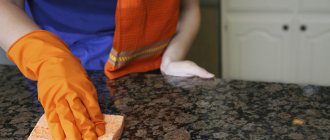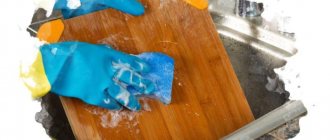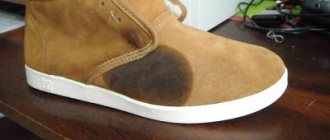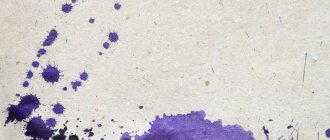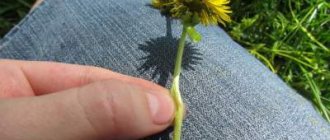If you are lucky enough to get an oil stain on your favorite clothes, this is not at all a reason to part with them. It’s enough to get acquainted with different ways to remove oil from clothes. Among them there are professional and folk or home remedies that are always at hand, but not everyone knows how to use them. Oil stains are really easy to remove, even if they have become thoroughly embedded in the fibers. Today we’ll talk about how to remove them from various types of fabrics, including wool.
General information, or is the game worth the candle?
Before you start studying methods for removing stains, it would be good to decide for yourself how relevant this is. If the thing is new and good, then, of course, you need to make every effort. Otherwise, leave it for gardening work.
Another criterion is the characteristics of the fabric or product. It affects the choice of funds and the time that will have to be spent.
Main types of stains
An oil stain is too general a definition. In fact, there are quite a few types of oils, each of which has its own characteristics. For convenience, we can distinguish two large groups:
- household,
- technical.
Household oils
This includes sunflower, cottonseed, soybean, corn and the like. They are further divided into several subgroups:
- non-drying - castor;
- drying for a long time - cotton, olive, rapeseed;
- drying out but leaving a sticky film - sunflower, corn;
- completely dry - pumpkin, flaxseed.
It is easiest to deal with oil that dries slowly and does not form a film on the surface.
Technical
Automotive and industrial oils include: synthetic oil, mineral, diesel, transmission, lubricating and cooling oils, etc.
At home, you can deal with any of the above contaminations if you apply enough diligence.
Features of removing oil stains from carpets, upholstery of chairs and sofas
To prevent oil from seeping deep into the carpet or upholstery, you should act immediately. The same recommendations apply to cleaning the car interior.
You will need:
- table salt, baking soda, starch, chalk, talc;
- shaving foam, dishwashing liquid;
- a piece of cotton cloth, dry napkins;
- container with water;
- vacuum cleaner, toothbrush.
Blot the oil with a dry cloth or paper napkins. Remove liquid from the surface until it no longer leaves greasy marks on the napkin. Then sprinkle the stain with an absorbent agent that is on hand (for example, talcum powder, soda, table salt). The product is left on the surface of the carpet or upholstery for 1-2 hours, then removed by thoroughly vacuuming the surface.
If the stain is still noticeable, repeat the procedure with the adsorbent. In case of severe contamination, apply shaving foam or dishwashing liquid to the surface and gently rub it in with an old toothbrush. Remains of the product are removed with napkins or a dry cloth. It is better to remove dishwashing liquid with a damp cloth, then dry with dry cloths.
To remove dried oil stains from a sofa or other upholstered furniture, use WD-40 All-Purpose Lubricant. Apply a little product to the contaminated area and wait a few minutes, then blot the area with dry wipes: the universal lubricant will be removed along with the oil that it has absorbed from the upholstery.
To clean the upholstery, you can use lighter fluid, which will then need to be carefully removed.
Remember: some detergents, including dishwashing liquids, contain reagents that can change the color of the upholstery. Before using chemical detergents, be sure to test their effect on a small area of fabric.
Alcohol for carpet cleaning
Dampen a small piece of cotton cloth with isopropyl alcohol or use 2-3 paper towels for this purpose. Place the dampened cloth over the stain for 1-2 minutes, then gently rub the alcohol into the surface of the carpet.
If necessary, the procedure is repeated several times, then the surface is treated with clean water and dried.
Before removing sunflower oil from clothes, you should take into account the composition and color of the fabric, as well as the availability of available means that will help you quickly correct the situation and prevent the oil from being absorbed deeply into the surface of the clothing or furniture upholstery.
First stage of cleaning
After drying the stain, experienced housewives advise not to rush into washing, but to first use one of the adsorbent substances:
- Salt. Apply a thick layer and shake off after a couple of minutes.
- Starch. The fabric is soaked through, so it is better to cover the stain with a substance. Pour starch into a saucer, place a dirty piece of cloth on it and cover it with a good layer of powder on top. Press and leave for 3 hours.
- Talc. A good product to combat fresh stains. To do this, pour a layer of talcum powder over the stain, lay blotting paper on top and iron it with a warm, not hot iron. After this, leave it for 12 hours.
- Chalk or its analogues (for example, tooth powder). Grind to flour, cover the contaminated area, cover with a napkin and place a weight. Leave it overnight and then scrub the stain with a brush.
Adsorbents can absorb fine oily splashes without leaving any residue. But you shouldn’t put on clothes right away - you need to wash the item in the usual way to remove any remaining adsorbent. If we are talking about outerwear, then the remaining pollutants are removed with a soft rag, after which the product is dried on hangers, avoiding exposure to sunlight.
Second stage of cleaning
To completely remove a medium or large greasy stain, you will need to perform a final cleaning with one of the following products:
- Petrol. For convenience, mix a teaspoon of gasoline with a spoonful of starch. Spread the paste over the stain and leave until completely dry. After this, use a brush to remove all particles and place the product in the wash.
- Laundry soap . Vegetable oil can be easily neutralized if you immediately cover it generously with laundry soap foam. After 20 minutes, transfer the product to a basin and add warm water. Leave it overnight. You can add a little sugar after rubbing with laundry soap.
- Kerosene . Soak a cotton swab in it and wipe away any oil stains. Kerosene cannot be washed off with plain water, but it does not mix well with laundry soap.
- Mustard. The main thing here is to act on time. Sprinkle fresh oil spills generously with spice powder. After 30 minutes, slightly moisten the fabric and add foam from laundry soap. After another 20 minutes, start your normal wash.
- Ammonia. Sea buckthorn oil can be easily washed off if you pour ammonia on it and leave for 40 minutes.
- Turpentine is another reliable way to get rid of orange stains from sea buckthorn. Make a mixture of turpentine and ammonia or add potato starch to it.
Life hack To enhance the effect of all sorbents, an iron is used with great success. Place any cloth or paper towel under the stain, blotting paper on top and iron at medium temperature. The paper is changed as oil appears on it.
The most difficult thing is with drying oils. In this case, a hard film forms on the blots, which is extremely difficult to dissolve.
What to do first?
Like most types of stains, oily grease stains can be removed much easier if you tackle them right away.
The area of fabric on which oil has gotten must be rubbed with soda, talcum powder or chalk . Even tooth powder will do.
These products have a high absorbency, due to which they absorb some of the oil spilled on the fabric. Apply the powder with light rubbing movements. Also, to prevent the stain from spreading over an even larger area of the material, you can walk along its perimeter with a wet sponge.
After the fat is absorbed into the powder, it is crushed . Usually it is enough to wait 15-20 minutes. And then you can move on to removing the traces of oil.
This video will show you how to remove a greasy stain from clothes:
Fighting vegetable oil stains
Most often, minor troubles happen when you are cooking in the kitchen, frying, or just eating a salad. Popular masks with coconut oil also sometimes pose a difficult task for housewives.
How to remove a stain from sunflower, corn or coconut oil:
- Remove excess oil with a paper towel. Use plain white, otherwise you risk transferring the dye to your clothes.
- Cover the stain with baking soda. You can use cornstarch.
- Leave for 30-60 minutes, then scrub the stain with an old toothbrush.
- Pour some liquid soap and lather it.
- Machine wash following label instructions. Hot water helps dissolve fat, but not all products can withstand high temperatures.
- Add 200ml white vinegar to the drum. This will make washing more efficient.
- Make sure the result is achieved before drying and ironing the item.
Precautionary measures
When using a solvent to remove stains, it is necessary to protect the skin from contact with reagents. You should wear rubber gloves on your hands and protect your eyes.
When using gasoline or turpentine, you need to stay away from the fire. If you use products with a strong odor, you should open a window or carry out the treatment in the fresh air.
After the product has been processed with flammable substances, it should not be dried in a machine, as they may ignite due to high temperatures. If there is oil contamination on the shoes, they can only be dried naturally, otherwise the shoes will lose their shape.
Fighting animal stains
It can be butter or beef fat; no one is safe from the fact that herring oil will not get on your clothes while you are removing the bones. You can get rid of such stains, but the fight should begin immediately:
- Dish gel. It is slightly diluted with water, after which the solution is soaked into the stain.
- White spirit or acetone. You can use nail polish remover. Apply generously to the stain and leave for 20 minutes. Not suitable for synthetics!
- If butter gets on the upholstery of the sofa, you should cover it with a thick layer of baking soda, then wipe it with a rag soaked in stain remover.
Sources and nature of pollution
The most common sources of oil marks on clothing are cooking, cosmetic, and industrial oils (grease).
They leave bright, blurry spots that do not have a clear outline, which over time become covered with a layer of dust, fade and become dull. Old stains become visible on the reverse side of the fabric.
Fighting stains from technical oils
Depending on the type of fabric:
- To remove stains from velvet , use sifted sand. The stain is first moistened with gasoline using a cotton swab. Then the treated area is tapped with a bag of sand. When the dirt is absorbed, start washing.
- Cotton fabric is cleaned with alcohol. At 3 tbsp. l. add 1 tsp. ammonia and 0.5 tsp. gasoline. After soaking the stain, leave it for an hour before washing.
- For woolen fabric, glycerin with ammonia is used. Combine them in equal proportions, distribute them over the stain and start washing after an hour.
- Silk fabric will be saved by a solution of 9% vinegar in a 1:1 ratio. This technique will allow you to safely tidy up colored fabric, refreshing its shades.
- Denim . Toothpaste or laundry soap copes well with this task. Rub the denim with one or the other and leave for 30 minutes.
- Knitwear. Remove fresh stains with laundry soap and sugar. Old ones - with gasoline.
- Suede leather. To clean this capricious material, mix ammonia and liquid soap in equal proportions. Apply to the stain with a soft cloth and leave until dry, then clean with a soft toothbrush.
Professional products
If the actions are not successful, then you should resort to the help of specialized products for removing grease stains. Some of them were originally intended for other purposes, but do an excellent job with this task:
- Plumbing cleaning products - Sanita and many others. Be careful not to ruin the fabric: test on an inconspicuous area first. This method is not suitable for delicate fabrics.
- Bleaches. “Sorbent”, “Original”, “Antipyatin”. Inexpensive and effective means.
Now you can face oil stains head on. The listed means and methods for removing complex contaminants are enough for all occasions. Of course, the sooner you notice the stain, the higher the chances of removing it completely, without any residue.
Common mistakes
From the proposed arsenal of means suitable for removing contaminants from oil, one should resort to the use of gasoline, kerosene, and turpentine in extreme situations. This is due to the pungent, difficult-to-remove odor that permeates the processed products.
Do not place things with traces of oil on a hot radiator to dry, for example, after rain. When heated, contamination quickly penetrates the fibers, and it becomes almost impossible to remove it.
Having information about a variety of ways to remove oil stains from clothes, you can quickly navigate and choose the most suitable product.
